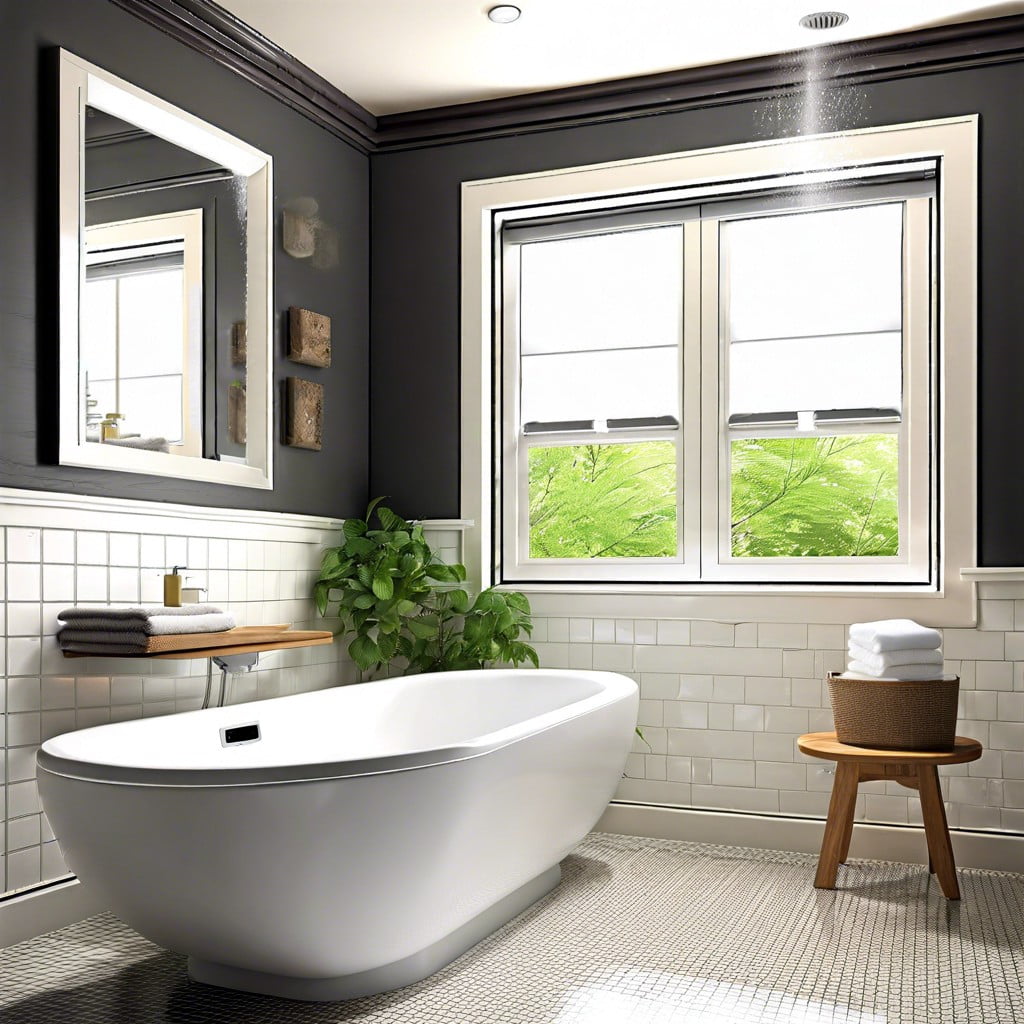Last updated on
Learn how to halt mold growth in your bathroom with effective strategies and easy-to-follow steps.
Key takeaways:
- Increase air circulation with exhaust fans and open windows
- Maintain low humidity with dehumidifiers
- Use mold-resistant paint and caulk
- Regularly clean bathroom surfaces
- Fix plumbing leaks promptly
Increase Air Circulation With Exhaust Fans and Open Windows

Stagnant air is a mold’s best friend. By boosting air circulation, you significantly hinder mold’s ability to grow. Installing an exhaust fan does wonders, especially if you run it during and after showers for about 30 minutes. On days when weather permits, open windows to let fresh air sweep through, and old moisture-laden air move out. This simple exchange keeps the environment less inviting for mold. Additionally, ensure the vents are not blocked to promote optimal airflow. Regular inspection and cleaning of these fans and windows also help maintain their efficiency in keeping your bathroom fresh and less prone to mold buildup.
Maintain Low Humidity With Dehumidifiers
Keeping your bathroom’s humidity levels in check can ward off mold growth effectively. A practical solution is to invest in a dehumidifier. These handy devices suck excess moisture out of the air, making it hard for mold to thrive.
Choose a dehumidifier that fits the size of your bathroom. Small, portable units are great for tight spaces. For larger bathrooms, consider a more powerful model. Remember to empty the water reservoir regularly to keep the dehumidifier running efficiently.
Another tip is to use it during and after hot showers when humidity peaks. Just turn it on for about 20 to 30 minutes post-shower. This strategy helps prevent moisture from settling into nooks and crannies where mold might start to party.
By integrating these approaches, you’ll maintain a drier, fresher bathroom environment.
Use Mold-Resistant Paint and Caulk
Applying mold-resistant paint is a proactive measure to stop spores from taking hold on your bathroom walls. These paints contain antimicrobial agents that inhibit mold growth and are ideal for high-moisture areas. Remember to apply it on dry walls for better adhesion and effectiveness.
Caulking plays a critical role too. Silicone-based caulk, in particular, tends to have better mold resistance compared to its acrylic counterpart. Use it around tubs, sinks, and toilets where moisture gathers and makes sure to replace old or worn caulk to keep your defenses strong.
Regularly Clean Bathroom Surfaces
A stitch in time saves nine, especially when battling bathroom mold. Frequent cleaning prevents mold from taking hold and multiplying. Here are a few practical tips:
Use a mixture of water and vinegar as a natural cleaner; it’s effective at breaking down mold. Spray and scrub weekly, especially on tiles and shower curtains.
Don’t forget about less obvious spots like under the sink and around the toilet base, which can harbor sneaky mold colonies.
Dry surfaces after use to stop mold’s preferred damp environment. A quick wipe-down of walls and counters after showers can make a big difference.
Start incorporating these habits into your routine to stay one step ahead of mold.
Fix Plumbing Leaks Promptly
A dripping faucet or a leaking pipe creates the perfect breeding ground for mold. Water accumulation from leaks maintains elevated moisture levels, facilitating mold growth. Addressing leaks immediately reduces moisture and significantly cuts down mold risks. Here are practical tips:
- Regularly inspect visible plumbing for signs of moisture.
- Listen for dripping sounds or look for puddles under pipes.
- Use a wrench to tighten loose fittings slightly. Over-tightening can damage threads or fittings.
- For persistent leaks, replacing worn-out washers or seals is usually effective.
- If the issue seems complex, consider hiring a professional plumber to ensure proper repair and to avoid future issues.
By staying proactive with plumbing maintenance, you defend your bathroom against mold invasion effectively.
Recap




